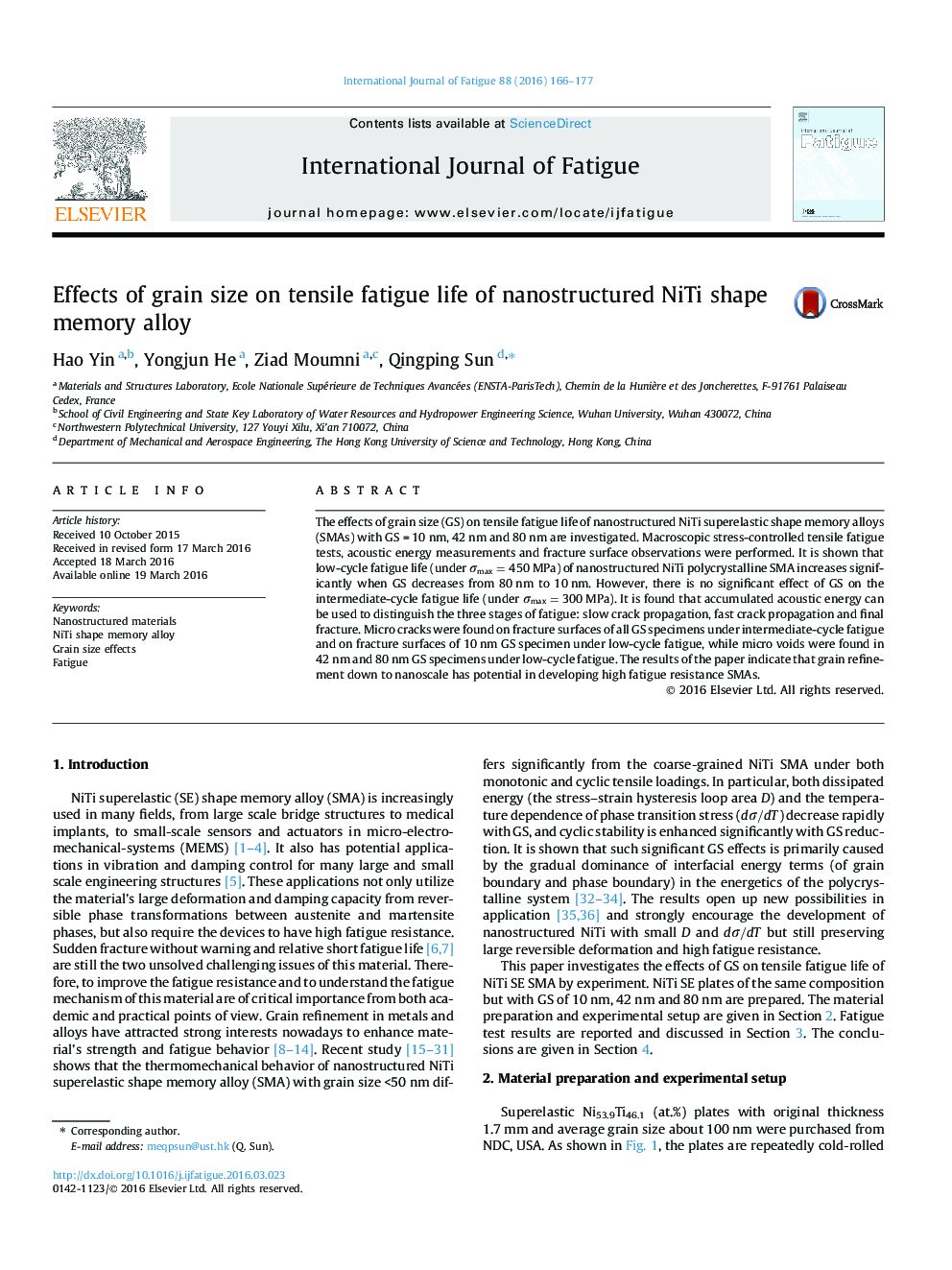| کد مقاله | کد نشریه | سال انتشار | مقاله انگلیسی | نسخه تمام متن |
|---|---|---|---|---|
| 777531 | 1463741 | 2016 | 12 صفحه PDF | دانلود رایگان |

• Tensile fatigue lives of nanostructured NiTi superelastic are investigated.
• Grain refinement brings significant enhancement of low-cycle fatigue life.
• Accumulated acoustic energy can be used to monitor stages of fatigue failure.
• Different fracture morphology might indicate different fracture mechanism.
The effects of grain size (GS) on tensile fatigue life of nanostructured NiTi superelastic shape memory alloys (SMAs) with GS = 10 nm, 42 nm and 80 nm are investigated. Macroscopic stress-controlled tensile fatigue tests, acoustic energy measurements and fracture surface observations were performed. It is shown that low-cycle fatigue life (under σmax=450MPa) of nanostructured NiTi polycrystalline SMA increases significantly when GS decreases from 80 nm to 10 nm. However, there is no significant effect of GS on the intermediate-cycle fatigue life (under σmax=300MPa). It is found that accumulated acoustic energy can be used to distinguish the three stages of fatigue: slow crack propagation, fast crack propagation and final fracture. Micro cracks were found on fracture surfaces of all GS specimens under intermediate-cycle fatigue and on fracture surfaces of 10 nm GS specimen under low-cycle fatigue, while micro voids were found in 42 nm and 80 nm GS specimens under low-cycle fatigue. The results of the paper indicate that grain refinement down to nanoscale has potential in developing high fatigue resistance SMAs.
Journal: International Journal of Fatigue - Volume 88, July 2016, Pages 166–177